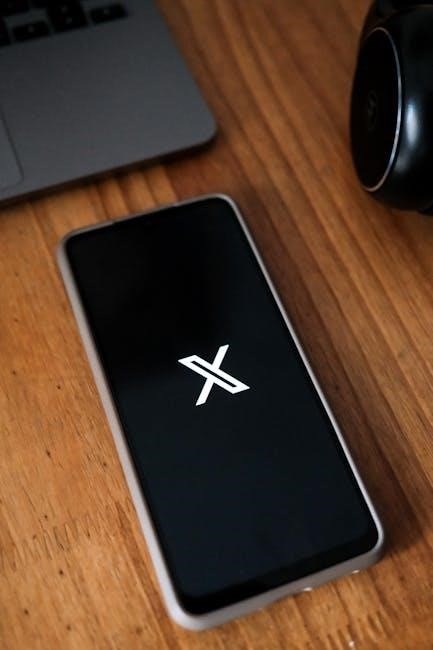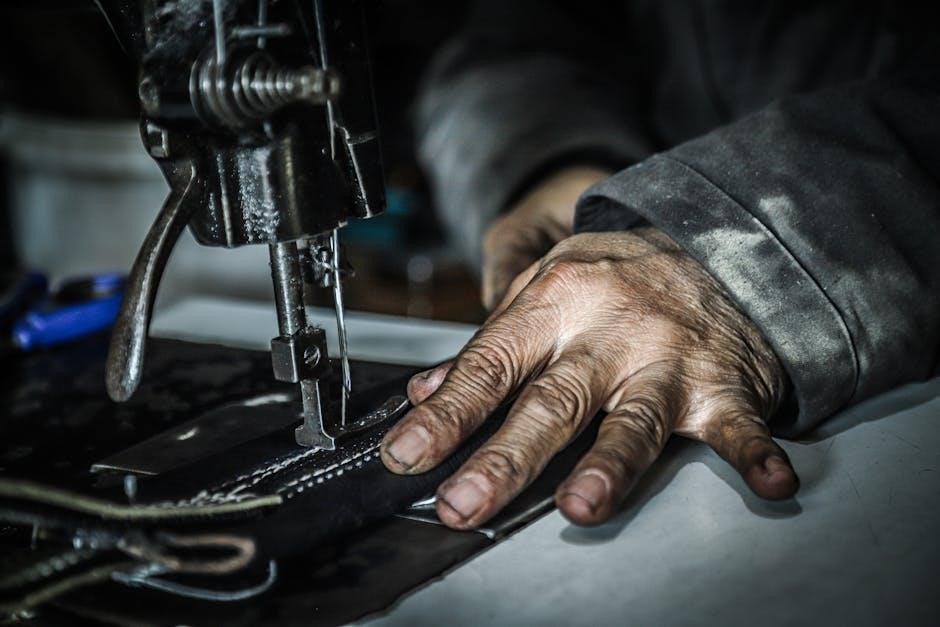Electrolux Washer User Manual: A Comprehensive Guide
Greetings and welcome! This guide assists in understanding all features of your Electrolux Washer. Use this manual for optimal performance. It provides instructions on routine maintenance like cleaning the drum, filters, and proper laundry procedures.
Finding Your Electrolux Washer Model Number
Locating your Electrolux washer’s model number is crucial for accessing the correct user manual and ordering replacement parts. The model number is typically a combination of letters and numbers that uniquely identifies your specific appliance. This identifier is essential for troubleshooting, maintenance, and ensuring you have the right information for your machine.
Begin your search by examining the front of the washing machine. Look around the door frame or on the door itself. Manufacturers often place a sticker or plate in this area for easy visibility. If you don’t find it there, check the sides of the machine, particularly near the top or bottom edges.
Another common location is the back panel of the washer. You might need a flashlight to properly inspect this area. The model number could be printed on a label or stamped directly onto the metal.
If you still can’t find the model number, consult your purchase receipt or any warranty documents you received when you bought the washer. The model number should be listed on these documents. Once you have the model number, you can easily find the correct user manual online or contact Electrolux customer support for assistance. Having this information readily available will save you time and ensure you get the right support for your appliance.
Accessing Electrolux Washer Manuals Online

Finding your Electrolux washer manual online is a straightforward process, offering quick access to essential information about your appliance. Start by visiting the official Electrolux website. Navigate to the “Support” or “Customer Service” section, where you’ll typically find a dedicated area for manuals and documentation.
Once on the support page, look for a search bar or a product selection tool. Enter your washer’s model number, which you can find as described earlier, into the search bar. The website should then display a list of relevant manuals, parts diagrams, and other helpful documents associated with your specific model.
If you’re unable to locate the manual on the Electrolux website, consider checking reputable appliance parts websites like Sears Parts Direct. These sites often host a comprehensive library of manuals for various appliances, including Electrolux washers. Simply enter your model number into their search tool to find the correct manual.
When downloading the manual, ensure it’s compatible with your device and from a trusted source to avoid potential security risks. Most manuals are available in PDF format, which can be easily viewed on computers, tablets, and smartphones. Keep a digital copy of the manual for quick reference whenever you need to consult it.
Downloading Electrolux Washer Manuals from Sears Parts Direct
Sears Parts Direct is a valuable online resource for obtaining Electrolux washer manuals. To download a manual from their website, begin by visiting the Sears Parts Direct homepage. Locate the search bar, typically found at the top of the page, and enter your specific Electrolux washer model number. Accurate model identification ensures you retrieve the correct manual for your appliance.
After entering the model number, click the search button. The website will then display a page with parts diagrams, available parts, and importantly, downloadable manuals related to your washer. Look for a section labeled “Manuals” or “Owner’s Manual.”
Click on the link or button that corresponds to the manual you need. This will usually open the manual in a new tab or window as a PDF document. From there, you can save the PDF to your computer or mobile device for offline access.
Before downloading, double-check that the manual matches your washer’s model number and that the document appears complete and legible. It’s advisable to save the manual in a dedicated folder on your device for easy retrieval in the future. Sears Parts Direct offers a reliable and convenient way to access and download Electrolux washer manuals.
Understanding the Electrolux Washer User Interface
The Electrolux washer user interface is designed for intuitive operation, allowing users to easily select wash cycles and customize settings. Typically, the interface consists of a control panel with a combination of buttons, knobs, and a digital display.
The control panel usually features a central knob or dial for selecting different wash cycles. These cycles are often labeled with descriptive names such as “Delicates,” “Normal,” “Heavy Duty,” and “Quick Wash.” The digital display shows information such as the selected cycle, remaining time, and any error codes.
Additional buttons on the control panel may allow you to adjust settings like water temperature, spin speed, and soil level. Some models also offer options for pre-soaking, extra rinsing, or steam cleaning. It’s important to consult your user manual to understand the specific functions and features of your washer’s interface;
The display is typically easy to read, even in low-light conditions. Error codes displayed can help in troubleshooting issues, referring to the manual for their meaning. Proper understanding of the user interface ensures efficient use of your Electrolux washer. Familiarizing yourself with the controls and display contributes to optimal washing performance.
Electrolux Washer Routine Maintenance: Cleaning the Drum

Maintaining a clean drum in your Electrolux washer is crucial for optimal performance and preventing unpleasant odors. Routine cleaning helps remove detergent residue, mineral buildup, and mildew, ensuring your clothes come out fresh and clean.
To clean the drum, start by referring to your washer’s user manual for specific instructions. Many Electrolux washers have a dedicated “clean washer” cycle. If your model has this cycle, simply run it according to the manual’s directions, using a washer cleaner or a cup of bleach.
If your washer doesn’t have a dedicated cleaning cycle, you can manually clean the drum. Start by wiping down the interior with a damp cloth. For stubborn stains or buildup, use a solution of water and white vinegar. Leave the solution to sit for about 30 minutes before wiping it away.
To prevent mildew growth, leave the washer door slightly ajar after each use to allow the drum to air dry. Regularly inspect the rubber seal around the door for mold and clean it with a bleach solution if necessary. This ensures the longevity of your machine;
Electrolux Washer Routine Maintenance: Cleaning the Filters
Maintaining clean filters in your Electrolux washer is essential for optimal performance and preventing drainage issues. Over time, lint, debris, and small objects can accumulate in the filters, hindering water flow and potentially damaging the pump.
To locate the filters, consult your Electrolux washer’s user manual. The manual will provide specific instructions on where the filters are located, as well as how to safely access and remove them. Typically, the filter is located at the front of the machine, near the bottom.
Before cleaning the filters, always disconnect the washer from the power supply to prevent electrical shock. Once the filters are removed, rinse them thoroughly under running water to remove any accumulated debris. Use a soft brush to scrub away stubborn residue if necessary.
After cleaning, ensure the filters are properly reinstalled according to the user manual’s instructions. Make sure they are securely in place to prevent leaks. Regularly cleaning the filters, ideally every month or as recommended in your user manual, will help maintain your washer’s efficiency and prolong its lifespan.
Proper Laundry Preparation: Emptying Pockets and Fastening Zips

Proper laundry preparation is a crucial step in ensuring the longevity and optimal performance of your Electrolux washer. Neglecting this step can lead to damage to both your clothing and the washing machine itself;
One of the most important aspects of laundry preparation is emptying all pockets before loading items into the washer. Coins, keys, pens, and other small objects left in pockets can cause significant damage to the drum, pump, and other internal components of the machine. They can also damage your clothing, leading to tears or snags.
Another essential step is fastening all zippers, hooks, and other closures on your garments. Open zippers can snag on other items in the wash, causing damage to both the zipper itself and the surrounding fabric. Hooks can also become entangled, leading to similar problems.
By taking a few extra moments to empty pockets and fasten closures, you can prevent costly repairs and ensure that your Electrolux washer continues to provide reliable performance for years to come. Always refer to your user manual for additional guidance on proper laundry preparation techniques.
Avoiding Overloading the Electrolux Washer
Overloading your Electrolux washer is a common mistake that can lead to a variety of problems, ranging from poor washing performance to mechanical damage. It’s crucial to understand the washer’s capacity and avoid exceeding it.
When the washer is overloaded, clothes don’t have enough space to move freely during the wash cycle. This prevents the detergent from distributing evenly and can result in clothes that are not thoroughly cleaned. You might notice residue on your clothes or lingering odors even after washing.
Overloading also puts excessive strain on the washer’s motor and other components. This can lead to premature wear and tear, increasing the risk of breakdowns and costly repairs. The washer may struggle to spin properly, leaving clothes soaking wet at the end of the cycle.
Refer to your Electrolux washer’s user manual for specific guidelines on load capacity. Generally, you should leave enough space in the drum for clothes to move freely. Avoid packing the drum tightly, and consider washing larger items like blankets or comforters separately. By following these guidelines, you can ensure optimal washing performance and prolong the life of your appliance.

Using the Correct Detergent for Your Electrolux Washer
Selecting the right detergent and using the appropriate amount are essential for achieving optimal cleaning results and maintaining the longevity of your Electrolux washer. High-efficiency (HE) detergents are specifically formulated for use in HE washers like Electrolux models. These detergents produce fewer suds, preventing buildup and ensuring proper operation of the washer’s components.
Using regular detergents in an HE washer can lead to excessive suds, which can interfere with the washing process and leave residue on your clothes. In severe cases, excessive suds can even damage the washer’s internal components.
Always follow the detergent manufacturer’s instructions regarding the amount of detergent to use. Using too much detergent can lead to residue buildup and poor rinsing, while using too little may not effectively clean your clothes.
Consider factors such as the size of the load, the level of soil, and the water hardness when determining the appropriate amount of detergent; If you have hard water, you may need to use slightly more detergent to achieve optimal results. Refer to your Electrolux washer’s user manual for specific recommendations on detergent usage.
Understanding Laundry Care Labels for Electrolux Washers
Decoding laundry care labels is crucial for properly washing your clothes and preventing damage. These labels provide essential information about the fabric composition and recommended washing methods. Electrolux washers offer various cycles and settings designed to accommodate different fabric types and washing requirements, making it even more important to understand the instructions on these labels.
The wash symbol, typically represented by a stylized tub filled with water, indicates the recommended water temperature and wash cycle. A number inside the tub indicates the maximum water temperature in Celsius or Fahrenheit. A bar underneath the tub signifies a gentle wash cycle.
The bleach symbol, a triangle, indicates whether bleaching is permitted. A plain triangle means any bleach can be used, while a triangle with two lines indicates non-chlorine bleach only. A crossed-out triangle signifies that bleaching is not allowed.
The drying symbol, a square, provides instructions on how to dry the garment. A circle inside the square indicates tumble drying. Dots inside the circle represent the heat setting, with one dot for low heat and two dots for medium heat. A crossed-out drying symbol means the garment should not be tumble dried.
Troubleshooting Electrolux Washer Drainage Issues
Experiencing drainage issues with your Electrolux washer can be frustrating. Several factors may contribute to this problem, and understanding potential causes can aid in effective troubleshooting. A common culprit is a clogged drain hose or filter. The drain hose, responsible for expelling water from the washer, can become obstructed with lint, debris, or small objects. Regularly inspecting and cleaning the drain hose can prevent blockages.
The drain filter, typically located at the front of the washer behind a small access panel, traps lint and other particles. Over time, this filter can become clogged, hindering proper drainage. Cleaning the filter regularly, as outlined in your Electrolux washer’s user manual, is crucial for maintaining optimal performance.
Another potential issue is a malfunctioning drain pump. The drain pump is responsible for actively pumping water out of the washer. If the pump is faulty or damaged, it may not be able to effectively remove water. In such cases, it’s advisable to consult a qualified appliance repair technician for assessment and potential replacement of the drain pump.
Safety Precautions: Items Not to Wash in Your Electrolux Washer
To ensure the longevity of your Electrolux washer and prevent potential hazards, it’s crucial to adhere to specific safety precautions regarding items not suitable for washing; Flammable or explosive materials, such as gasoline, cleaning solvents, kerosene, and cooking oils, should never be placed in the washer. These substances pose a significant fire risk and can damage the machine’s components.
Items that have been previously cleaned with or exposed to such chemicals also fall under this category, as residual traces can still ignite during the washing process. Additionally, avoid washing items containing materials that could degrade or dissolve in water, potentially clogging the drain or damaging the washer’s internal mechanisms.
Furthermore, items with embellishments or attachments that could detach during washing, such as sequins, beads, or delicate trim, should be hand-washed or professionally cleaned to prevent damage to both the item and the washer. Always consult the care label of the item before washing and err on the side of caution when unsure.
Installation Guidelines for Electrolux Washers
Proper installation of your Electrolux washer is paramount for optimal performance and safety. Before commencing the installation process, carefully read the supplied instructions to prevent injuries or damage. Ensure that the washer is placed on a level and stable surface, capable of supporting its weight when fully loaded with water and laundry.
Connect the water hoses to both the hot and cold water supplies, ensuring they are new and in good condition to prevent leaks. The machine must be connected with new water hoses. Avoid using old or damaged hoses. Securely attach the drain hose to a suitable drainpipe, ensuring it is properly positioned to prevent backflow or siphoning.
If installing the washer on a plinth or stacking a dryer on top, use the appropriate accessories recommended by Electrolux. Verify that the electrical connection matches the washer’s requirements, and use a grounded outlet to prevent electrical hazards. After installation, test the washer by running a short cycle to check for leaks, proper drainage, and smooth operation.
